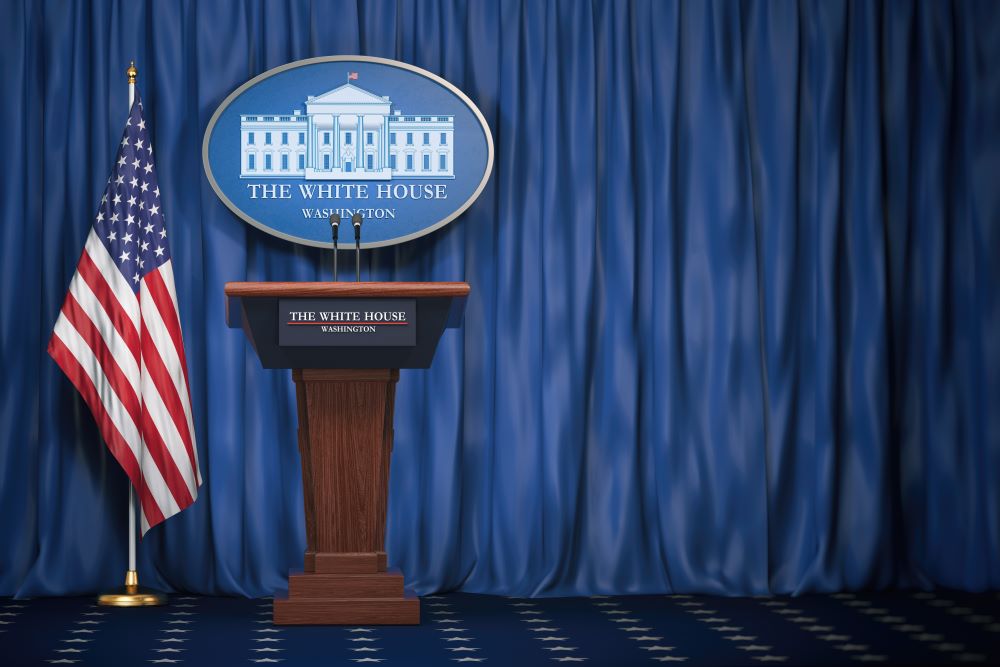Where do the Major Presidential Candidates Stand on Taxes?


As the 2024 presidential election approaches, tax policy remains a pivotal issue in the platforms of both major candidates: former President Donald Trump and President Joe Biden. Each has outlined distinct visions that promise to reshape the nation’s fiscal outlook, impacting individual taxpayers and the business community. Trump advocates for deeper tax cuts, while Biden proposes increased rates for higher earners and corporations, making understanding these policies crucial for effective financial planning and strategy. To help clients, prospects, and others, Wilson Lewis has provided a summary of the key details below.
Background
The 2017 Tax Cuts and Jobs Act (TCJA) was a significant shift in U.S. tax policy, reducing the corporate tax rate from 35% to 21% and lowering individual income tax rates. It also increased the standard deduction, simplifying the tax process for many Americans. Although these cuts provided a short-term economic boost, they are projected to add nearly $2 trillion to the federal deficit by 2028.
With many provisions set to expire in 2025, the next president will decide whether to extend, modify, or let them expire. Trump seeks to make his tax cuts permanent, potentially fostering short-term growth but risking greater federal debt. Conversely, Biden aims to increase taxes on higher earners and corporations to fund public services, proposing a corporate tax rate of 28% and introducing measures against tax avoidance by multinationals. The Office of Management and Budget estimates Biden’s plan raises nearly $4.4 trillion in gross revenue from tax changes over the next 10 years.
Overview of Trump’s Tax Proposals
Donald Trump’s tax strategy is characterized by an aggressive push to extend and deepen the tax cuts initiated during his first term. His proposals are designed to stimulate economic growth by reducing personal and corporate tax rates. Trump advocates for making the individual income tax cuts introduced by the 2017 Tax Cuts and Jobs Act permanent. This measure aims to continue providing increased disposable income for consumers, which may help sustain consumer spending and economic momentum.
On the corporate front, Trump proposes maintaining the 21% corporate tax rate established by the TCJA, a significant reduction from the previous 35%. This policy is intended to bolster American business competitiveness globally, encouraging domestic investment and potentially leading to job creation. Trump argues that a competitive corporate tax rate is essential for keeping the United States attractive to business investment, both from domestic and international companies.
In addition to tax rate adjustments, Trump’s plan includes continuing the enhanced Child Tax Credit, which was doubled to $2,000 per child under the TCJA. This policy is aimed at providing financial relief to families, helping to offset costs, and in turn, potentially boosting the economy through increased consumer spending.
A notable aspect of Trump’s broader economic strategy involves trade tariffs. He proposes implementing a universal 10% baseline tariff on all U.S. imports, affecting a wide range of goods. More specifically, Trump intends to impose a 60% tariff on all imports from China. This move is seen as an effort to correct what he perceives as unfair trade practices and to encourage the production of goods within the United States. While aimed at protecting domestic industries, such tariffs could also lead to increased consumer prices and potential retaliation from trade partners.
These elements of Trump’s tax proposals reflect a continuation of his earlier policies, focusing on tax reduction as a primary tool for economic stimulation. The overarching goal is to create a more favorable tax environment for individuals and businesses, fostering an atmosphere of investment and economic expansion.
Overview of Biden’s Tax Proposals
Joe Biden’s approach to tax policy emphasizes “fundamental fairness” and the funding of social programs. At the core of his strategy is the proposal to increase the income tax rate for individuals earning more than $400,000 annually from the current 37% to 39.6%. This adjustment aims to ensure that high earners contribute a proportionate share of federal revenues, supporting a variety of public services and infrastructure projects.
Additionally, Biden advocates for increasing the corporate tax rate from 21% to 28%. This adjustment seeks to balance the need for a competitive international rate with the requirements for funding essential public initiatives, such as infrastructure improvements and investments in clean energy.
A notable element of Biden’s proposal is introducing a 25% minimum tax rate on billionaires, with the wealthiest Americans paying minimum taxes on total income. This measure addresses the disparities in tax contributions by those at the highest income brackets.
Biden also plans to enhance the Child Tax Credit (CTC). His proposal includes making the credit fully refundable and increasing the amount to $3,600 for children under six and $3,000 for older children. These changes aim to provide significant financial relief to families, helping alleviate the economic challenges middle and lower-income households face.
On the international taxation front, Biden proposes to increase the Global Intangible Low-Taxed Income (GILTI) tax rate from 10.5% to 21%. This adjustment is intended to ensure that multinational corporations pay a fair share of taxes on earnings made abroad, thus aligning more closely with upcoming international standards. He also suggests replacing the Base Erosion and Anti-Abuse Tax (BEAT) with a system consistent with the OECD/G20 agreements on a global minimum tax. This change is meant to enhance the tax system’s integrity by ensuring that multinational corporations engage in responsible tax practices globally.
These proposals reflect Biden’s commitment to creating a tax system that supports substantial public investment while ensuring that corporations and high-income individuals contribute an equitable share to the economy’s sustainability and growth.
Comparative Analysis
Trump’s policies focus on economic stimulation via broad tax reductions, which supporters say could extend the economic growth seen in 2018 and 2019. Critics, however, warn these cuts may lead to unsustainable deficits. Biden’s plan aims to address income inequality with targeted tax increases intended to fund public services without worsening the budget deficit. Both approaches have sparked a broader debate about the balance between tax levels and government spending.
Richard Rubin of the Wall Street Journal notes that one potential area of common ground could be the child tax credit. A bipartisan bill proposed in the House aimed to boost support for low-income families, though not to the extent Biden desires. Despite receiving overwhelming support in the House, this legislation has stalled in the Senate, illustrating the challenges of achieving bipartisan agreement even on widely supported issues. This impasse suggests that navigating fiscal policy, particularly regarding tax reforms, will be a complex endeavor in 2025, irrespective of which party holds power.
Reactions and Outlook
Economists and the public are divided on these tax strategies. While some applaud Trump’s growth-focused approach, others express concern over potential long-term fiscal impacts. Biden’s model is favored by proponents for its emphasis on equity and sustainability, though it faces criticism for possibly curtailing economic dynamism. Public opinion strongly supports increased taxes on the wealthy, with 60% of U.S. adults favoring higher taxes for wealthy individuals and large corporations, per recent Pew Research polls.
Contact Us
As the election nears, understanding the nuances of each candidate’s tax proposals is more crucial than ever. The forthcoming decisions will determine personal and corporate financial landscapes and shape the broader national economy. If you have questions about the information outlined above, or need assistance with another tax or accounting issue, Wilson Lewis can help. For additional information, call 770-476-1004 or click here to contact us. We look forward to speaking with you soon.
Recent Posts
Relief on Tap for Georgia Taxpayers
Earlier this month Georgia Governor Brian Kemp signed two important parcels of legislation into law.…
Preparing for an ERISA Audit
Preparing for an ERISA plan audit often starts with understanding what the audit looks for…
Auto Dealership Benchmarking
Atlanta car dealerships are constantly searching for ways to increase new and used car sales.…
Navigating New Auto Tariffs: What Dealerships Need to Know
On April 3, 2025, a new 25% tariff on imported vehicles went into effect, bringing…
Leukemia & Lymphoma Society Fundraiser
I want you to imagine hearing the three words, “You have cancer.” Sadly, this has…
Wilson Lewis Named a Regional Leader by Accounting Today
Atlanta accounting and advisory firm Wilson Lewis was honored this month as one the top…


